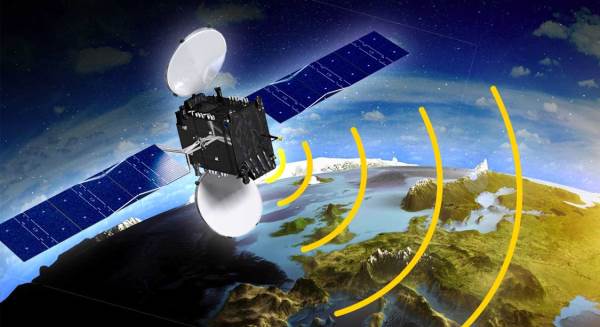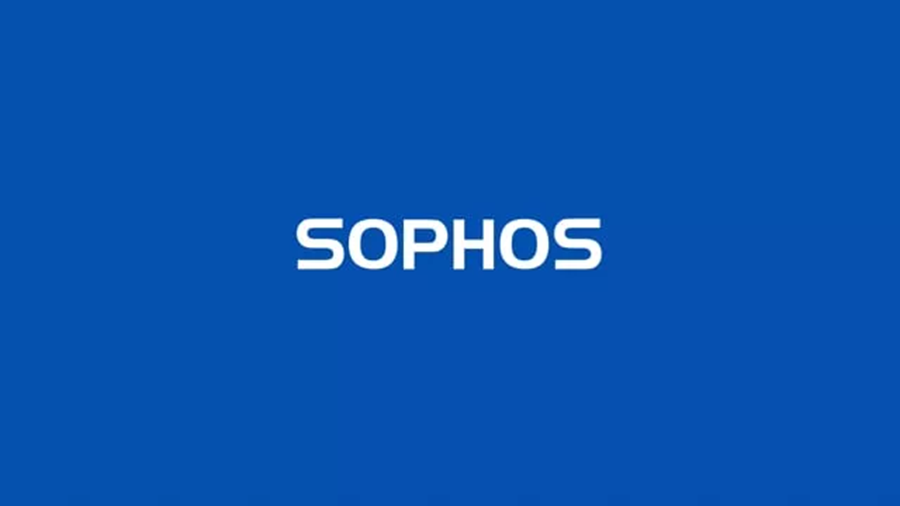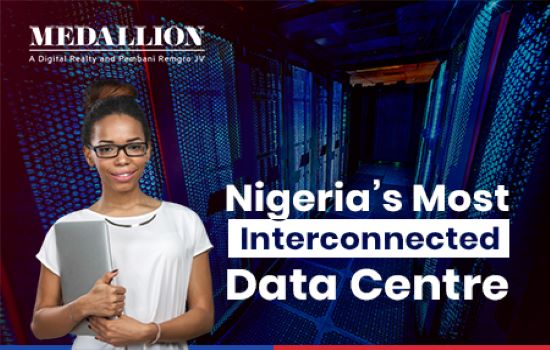Telecom
Benefits of SATCOM Tools & Resources

By Andrew Aroh
For satellite communications, we need tools and resources to enable us maximize capacity utilization, optimize system design, and reduce costs. Such tools and resources must be useful in all phases of communications, satellite development, and operations including:
- Requirements specification
- Long-range planning
- Satellite network design
- Operational transmission planning
- Capacity management
- Troubleshooting

Features of a typical packaged tools and resources:
- Accurately models thermal noise, adjacent carriers and co-channel interference, inter-modulation noise and propagation impairments
- Recently updated to include very comprehensive modeling of adjacent satellite interference (ASI) on both the uplink (uplink ASI) and downlink (downlink ASI).
- Uses the latest nonlinear amplifier model. Computes complex nonlinear effects.
- Uses the COMSAT PAP, ITU, and crane Two Component rain models: and includes databases of digitalized rain zone maps and rainfall statistics.
- Provides drag-and-drop carrier frequency assignment.
- Interfaces with commercial Communication System Monitoring (CSM) systems.
- Interfaces with the Satellite System Database (SSDB)
Additional Features:
- Plans saved in XML standard file format and can be viewed/modified by publicly available tools.
- Ability to retrieve and save plans from/to the database.
- Ability to model entire satellite and plan a large number of links simultaneously.
- Models extensively verified in the laboratory, field test, and customer-site measurements.
- Extremely fast computation utilizing sophisticated algorithms
- Can be used to perform sophisticated trade-off analyses, complex system studies, and optimal design of satellite-based networks.
- Approved by the Government as benchmark for validating other systems.
SATELLITE SYSTEM DATABASE CONTAINS:
- Space segment information:
Detailed satellite communications payload information for multiple satellite fleets:
- Satellite orbital parameters and orientation
- Antennas and antenna coverage patterns
- Amplifier and non-linear characteristics
- Possible and actual connectivity
- Possible and actual gain settings
- Frequency layout and transponder characteristics etc.
- Ground segment information:
- Thousands of earth stations with their transmit and receive characteristics and rainfall statistics.
- Modem characteristics for several different manufacturers.
- Plan information:
Save and retrieve plans to enable work-sharing between planners, and to provide plan information to other systems.
- MINIMUM SYSTEM REQUIREMENTS:
- Windows 95/98/ NT 4.0/2000
- 50MB free hard drive space
- 300-MHz Pentium 2
- SVGA video adapter
- 128 MB RAM
- 1024 x 768 res./256 colors
- CD-ROM Drive
- 8 MB video RAM
- BENEFITS OF TOOLS & RESOURCES PACKAGE:
- Reduce costs by maximizing space-segment capacity utilization
- Perform trade-off analyses to minimize ground-segment infrastructure costs
- Design complex satellite-based networks with ease
- Manage and efficiently plan large scenarios with hundreds or thousands of links in multiple transponders.
- Achieve orders-of-magnitude increase in productivity of satellite planners
- Track power and bandwidth utilization, and discover ‘’hidden’’ ‘’capacity’’
- Troubleshoot operational plans and easily identify complex problems
- Evaluate future satellite systems and assess long-term capacity requirements.
Plan with confidence using the most accurate, laboratory and field verified models that serve as benchmarks for validating other planning systems.
REPORTS & PLOTS:
- Accurately models and analyzes impairments for C-band, Ku-band, X-band and Ka-band transponders, and automatically optimize carrier power to meet user-specified quality of service, both in clear weather and rain-degraded conditions.
- Extensive set of reports and plots in ASCII, word, Excel, and PDF
- Saw tooth transmission plan plots
- Noise, margin, and power summary reports
- Rain analysis, predicted link availability, and required rain margins
- Intermediation power spectral density plots and reports
- Carrier power spectrum plots
- Receive co-pol and cross-pol power spectra at earth stations
- Carrier power spectrum plots
SUMMARY
Satellite Tools and Resources Include:
- The Antenna Coverage Program (ACP)
- The Link Budget Calculator (Link)
- The Propagation Analysis Program (PAP)
- The Coverage Analysis Program (CAP)
- Custom reports (easily generated from the SSDB)
- These tools are combined with the Satellite System Database (SSDB)-a comprehensive relational database of satellite system parameters-and powerful calculators for pattern advantage analysis, beacon calculations, and general satellite conversion calculations.
- Utilities to compute pointing angles, beta factors, and look angles are also included.
Andrew Aroh is President SSPI Nigeria
Telecom
Mafab Communications Has Launched 5G Services- Findings

Contrary to media some media reports yesterday, Mafab Communications, one of the companies granted Fifth Generation (5G) licences by Nigerian Communications Commission (NCC) has actually rolled out its 5G network services in Abuja since 2023.

According to Nigeria CommunicationsWeek findings, the rollout came almost a year since the telco paid $273.6 million for spectrum in the 3.5GHz band as part of a government auction.
Mafab Communications, has, not however kept to its promise to to strengthen its commercial operations by March 2025 as its services has remained skeletal since the media launch.
It said that it will roll out its high-speed 5G services through 102 operational sites strategically located in Kano and Abuja but that did not happen as at close of March.
An insider in the company, however assured that starting this month, subscribers with Mafab’s 5G routers will be able to enjoy ultra-fast connectivity on its expanding network.
This move aims to capture a wider share of Nigeria’s growing demand for 5G services.
Dr Musbahu Bashir, founder and chairman, Mafab Communications, said during the rollout launch that the telco will offer both voice and data services nationwide.
Additionally, Nigerian cities like Lagos, Port Harcourt, Enugu, Kano, and Kaduna have been listed for the deployment of 5G services while those not on the list will have services deployed at a later stage.
“The rollout of Mafab Communications 5G network is the beginning of immense opportunities for the country as it represents Nigeria’s capabilities and infinite possibilities,” he said.
“The prospect of increased job opportunities as a consequence of the value-chain benefits the technology will generate and offer is the dream we have all gathered here to launch today,” Bashir continued.
Telecom
Samsung Introduces Local Nigerian Languages to Galaxy Devices, Celebrating Cultural Diversity

Samsung Electronics has taken a bold step in enhancing user experience and inclusivity by introducing Hausa, Igbo, and Yoruba as official language options on selected Samsung Galaxy devices.

L-R: Stephen Okwara, Head, Product Management, Mobile Experience, Samsung Electronics West Africa; Joy Tim-Ayoola, Group Head, Mobile Experience, Samsung Electronics West Africa; Tae Sun Lee, Samsung Electronics West Africa CEO; Oge Maduagwu, Head of Marketing Samsung Electronics West Africa, and Nathan Lee, Regional Business Lead, Mobile Experience, Samsung Electronics West Africa, at the launch of Nigeria local language integration on Galaxy S25, A56, A36, and A26 devices, on April 03, 2025.
The feature, which is now available on the Galaxy S25, A56, A36, and A26 devices, reaffirms Samsung’s commitment to delivering innovative technology that speaks the language of its users.
With this groundbreaking update, Samsung users across Nigeria can now navigate their smartphones in their preferred local language, making technology more accessible, while also upholding our cultural heritage.
A Celebration of Culture and Technology
To mark the launch, Samsung hosted a cultural-themed press briefing featuring traditional music, local cuisine, and a showcase of the new language feature. Employees and guests attended in traditional Yoruba, Igbo, and Hausa attires, celebrating Nigeria’s rich cultural diversity.
Samsung also announced plans to expand local language support to more devices in the near future, reinforcing its dedication to making technology more inclusive for African users.
Empowering Users Through Language
The integration of Hausa, Igbo and Yoruba on Samsung devices reflects the brand’s mission to bridge the digital gap and enhance user engagement. Speaking at the press conference, Oge Maduagwu, Head of Marketing, Samsung Electronics West Africa, said, “At Samsung, we understand that technology is most powerful when it is accessible to all.
“By incorporating our local Nigerian languages, we are making our devices more intuitive and relatable, ensuring that millions of Nigerians can interact with their smartphones in the language they love and understand best”.
Seamless Language Transition on Galaxy Devices
Stephen Okwara, Head of Product Management, Samsung Electronics West Africa added, “The new local language feature is designed to deliver a seamless user experience, allowing customers to easily switch between languages. Users can activate Hausa, Igbo, or Yoruba on the Galaxy S25, A26, A36, and A56 by navigating to: Settings > Language & Input > Select Language
“This update enhances smartphone usability, particularly for those who prefer their native language over English, ensuring greater digital inclusivity, enhancing digital literacy and encouraging more users to engage with technology in their native tongues” He concluded.
Availability
Customers can visit all Samsung Experience Stores or authorized retailers in Nigeria to learn more and experience the feature firsthand.
Telecom
Sophos Reveals Key Findings: 56% of Cyberattacks Exploit Valid Credentials

Sophos, a global leader of innovative security solutions for defeating cyberattacks, has released the 2025 Sophos Active Adversary Report, which details attacker behaviour and techniques from over 400 Managed Detection and Response (MDR) and Incident Response (IR) cases in 2024.

The report found that the primary way attackers gained initial access to networks (56% of all cases across MDR and IR) was by exploiting external remote services, which includes edge devices such as firewalls and VPNs, by leveraging valid accounts.
The combination of external remote services and valid accounts aligns with the top root causes of attacks. For the second year in row, compromised credentials were the number one root cause of attacks (41% of cases). This was followed by exploited vulnerabilities (21.79%) and brute force attacks (21.07%).
Understanding The Speed of Attacks
When analyzing MDR and IR investigations, the Sophos X-Ops team looked specifically at ransomware, data exfiltration, and data extortion cases to identify how fast attackers progressed through the stages of an attack within an organization. In those three types of cases, the median time between the start of an attack and exfiltration was only 72.98 hours (3.04 days). Furthermore, there was only a median of 2.7 hours from exfiltration to attack detection.
“Passive security is no longer enough. While prevention is essential, rapid response is critical. Organizations must actively monitor networks and act swiftly against observed telemetry. Coordinated attacks by motivated adversaries require a coordinated defense. For many organizations, that means combining business-specific knowledge with expert-led detection and response. Our report confirms that organizations with proactive monitoring detect attacks faster and experience better outcomes,” said John Shier, field CISO.
Other Key Findings from the 2025 Sophos Active Adversary Report:
· Attackers Can Take Control of a System in Just 11 Hours: The median time between attackers’ initial action and their first (often successful) attempt to breach Active Directory (AD) – arguably one of the most important assets in any Windows network – was just 11 hours. If successful, attackers can more easily take control of the organization.
· Top Ransomware Groups in Sophos Cases: Akira was the most frequently encountered ransomware group in 2024, followed by Fog and LockBit (despite a multi-government takedown of LockBit earlier in the year).
· Dwell Time is Down to Just 2 Days: Overall, dwell time – the time from the start of an attack to when it is detected – decreased from 4 days to just 2 in 2024, largely due to the addition of MDR cases to the dataset.
· Dwell Time in IR Cases: Dwell time remained stable at 4 days for ransomware attacks and 11.5 days for non-ransomware cases.
· Dwell Time in MDR Cases: In MDR investigations, dwell time was only 3 days for ransomware cases and just 1 day for non-ransomware cases, suggesting MDR teams are able to more quickly detect and respond to attacks.
Ransomware Groups Work Overnight: In 2024, 83% of ransomware binaries were dropped outside of the targets’ local business hours.
· Remote Desktop Protocol Continues to Dominate: RDP was involved in 84% of MDR/IR cases, making it the most frequently abused Microsoft tool.
To shore up their defenses, Sophos recommends that companies do the following:
· Close exposed RDP ports
· Use phishing-resistant multifactor authentication (MFA) wherever possible
· Patch vulnerable systems in a timely manner, with a particular focus on internet-facing devices and services
· Deploy EDR or MDR and ensure it is proactively monitored 24/7
· Establish a comprehensive incident response plan and test it regularly through simulations or tabletop exercises
Read the full It Takes Two: The 2025 Sophos Active Adversary Report on Sophos.com.

 Telecom3 days ago
Telecom3 days agoMTN Denies Data Theft Allegations, Says no Financial Incentive to Do So

 Telecom2 days ago
Telecom2 days agoMafab Communications Has Launched 5G Services- Findings

 Broadcasting2 days ago
Broadcasting2 days agoBurna Boy, Other Nigerian Artists Pocket $38m from Spotify in 2024

 Telecom3 days ago
Telecom3 days agoVitel Wireless, Nigeria’s First MVNO to Launch Operations This Quarter

 Telecom2 days ago
Telecom2 days agoSophos Reveals Key Findings: 56% of Cyberattacks Exploit Valid Credentials

 E-Financial3 days ago
E-Financial3 days agoFG Asks World Bank for Fresh $10.50m Loan to Enhance CBN Technical Capacity

 E-Business2 days ago
E-Business2 days agoEquinix Launches LG2.3 Data Centre in Nigeria

 E-Business2 days ago
E-Business2 days agoDHL Signs MoU with Temu to Drive Sustainable Supply Chain Solutions for SMEs












